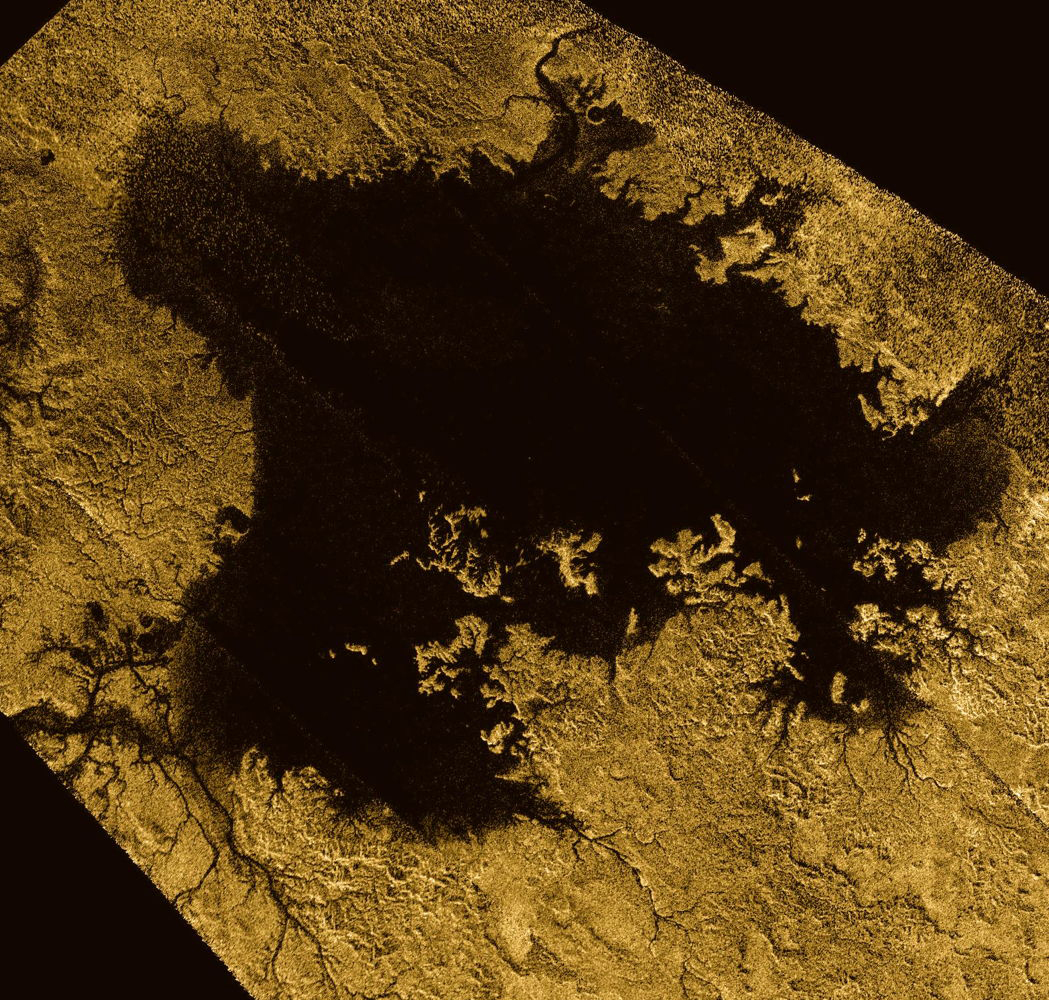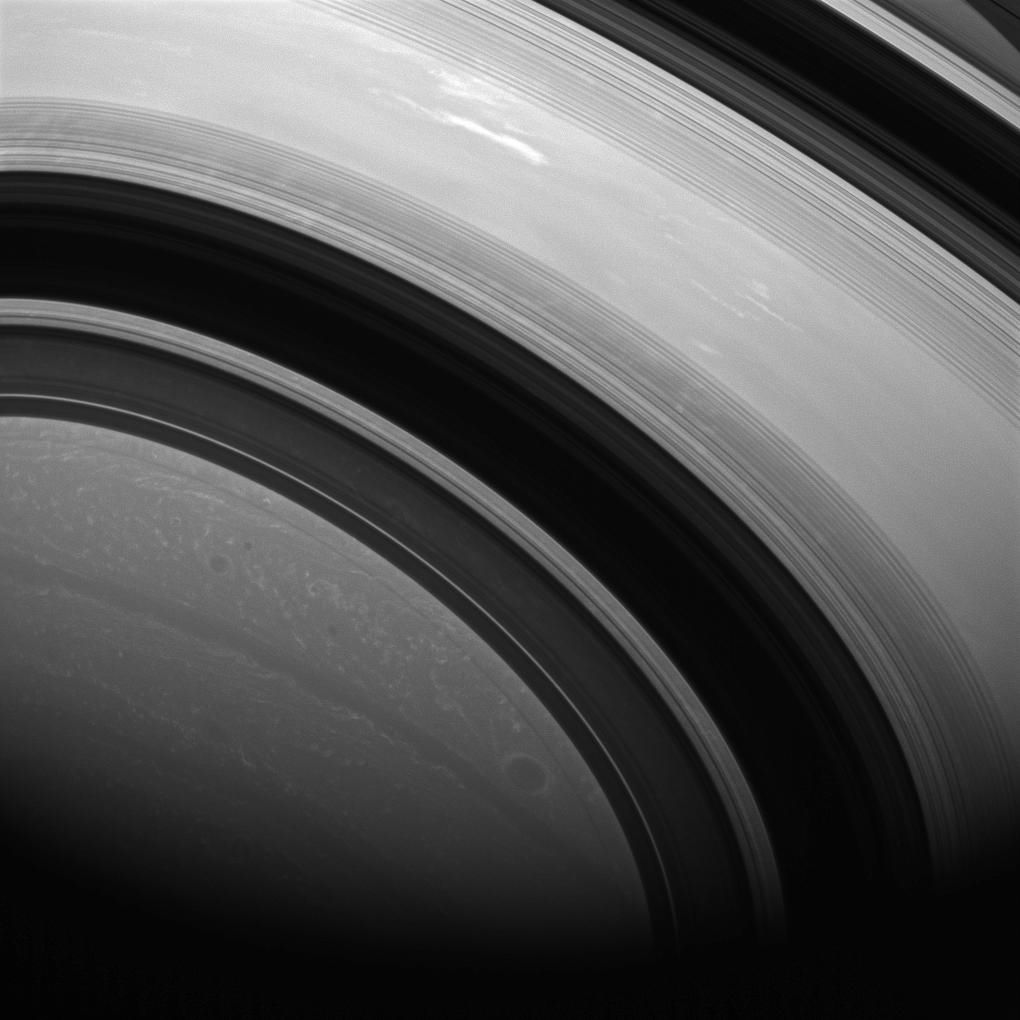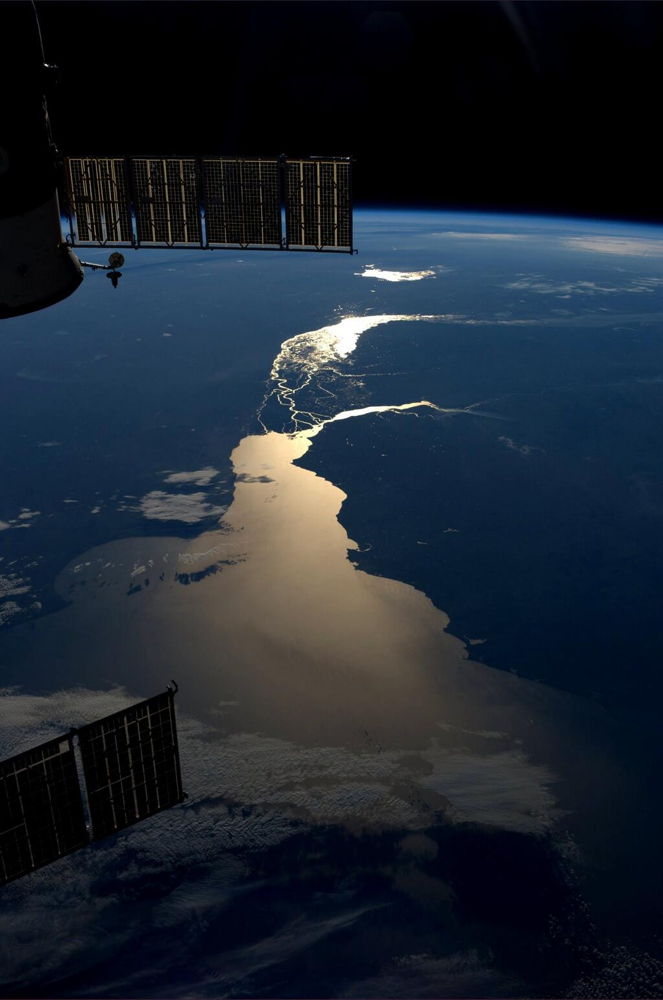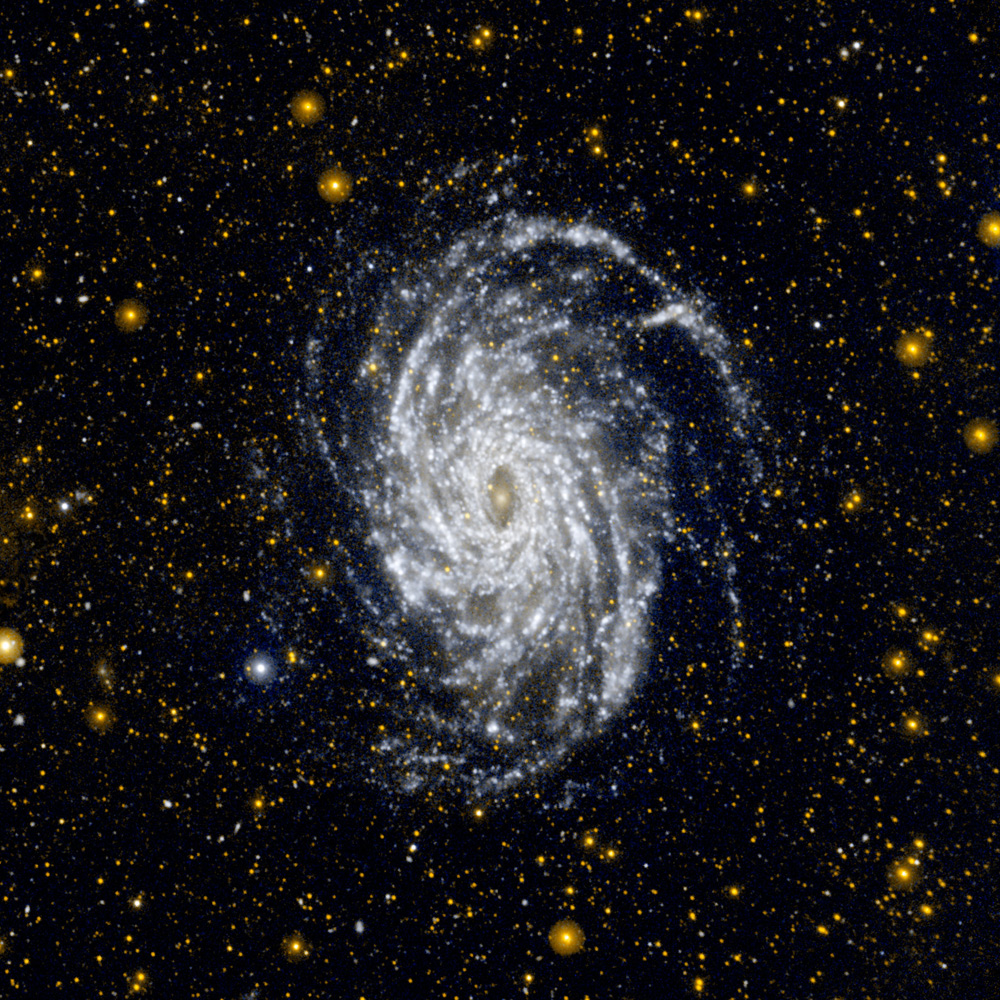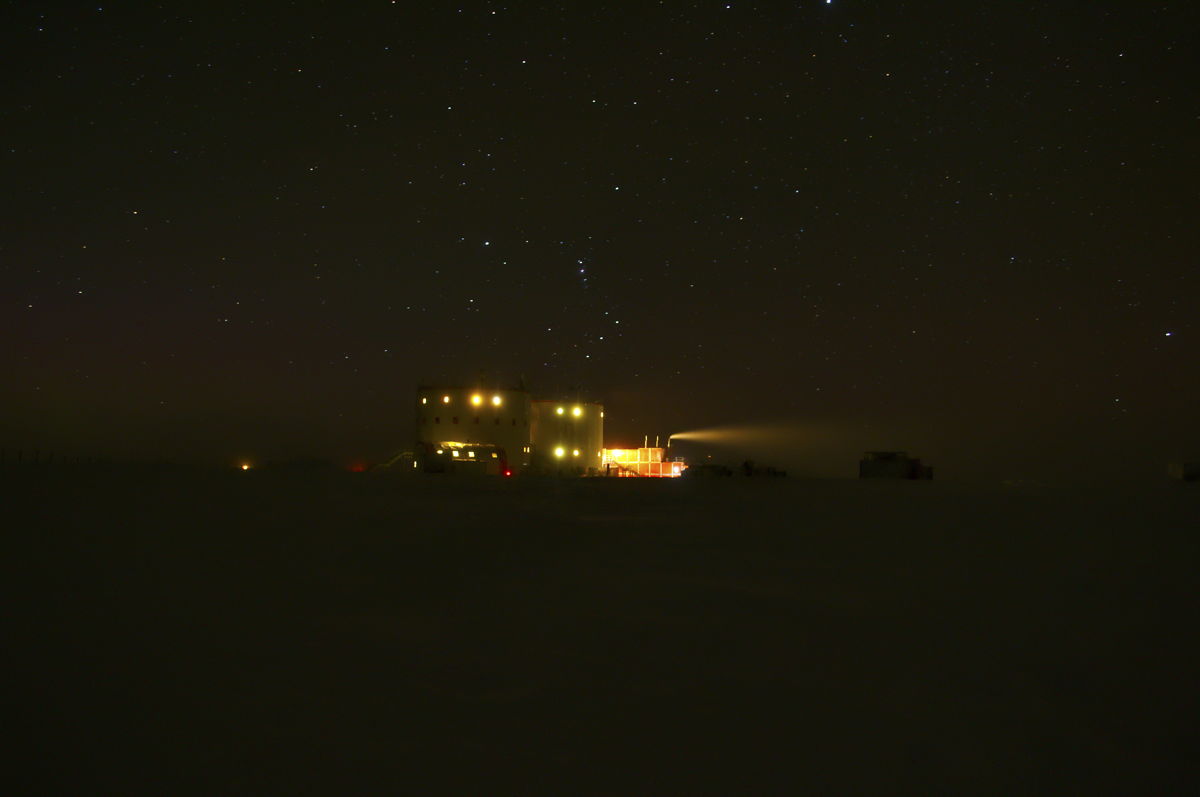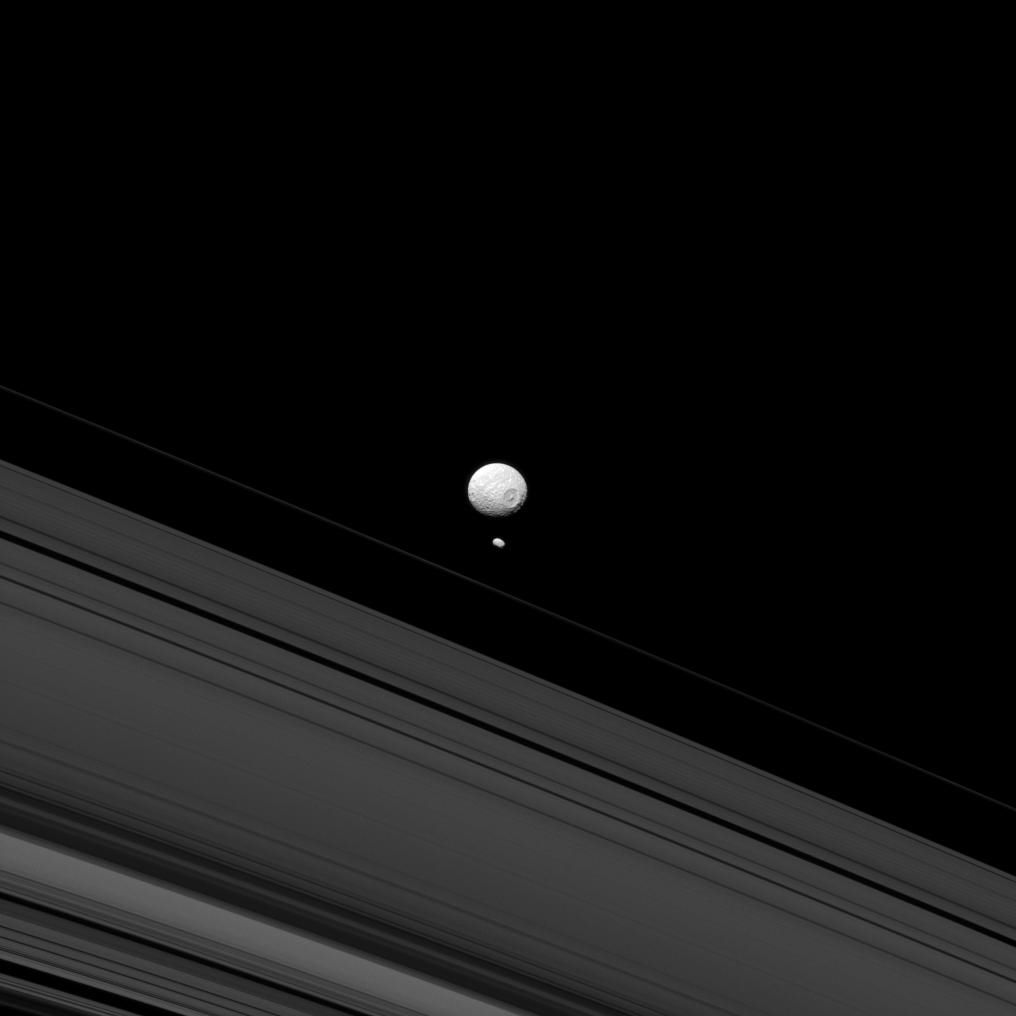Space Image of the Day Gallery (July 2013)
(Not) True Colors
Tuesday, July 16, 2013: Ligeia Mare represents the second largest known body of liquid on Saturn's moon, Titan, shown here in a false-color image obtained by NASA's Cassini mission. Ligeia Mare contains liquid hydrocarbons, such as ethane and methane, and makes up one of the many seas and lakes located in Titan's north polar region. The image consists of a false-color mosaic of synthetic aperture radar images obtained by the Cassini spacecraft between February 2006 and April 2007. In this image, liquids, dark to the radar, appear black and the solid surface of Titan, which appears bright to the radar, appears yellow. Image released May 22, 2013.
— Tom Chao
Quiet Spot
Wednesday, July 17, 2013: One of the largest sunspot groups of this solar cycle rotated across the sun July 3-11, 2013, but remained surprisingly quiet in terms of solar activity. This still came from a video made of Intensitygrams, taken by the Helioseismic and Magnetic Imager instrument on SDO. As a scale reference, the largest spot could contain a couple of Earths.
— Tom Chao
(Southern) Winter Is Coming
Thursday, July 18, 2013: The shadows of Saturn's rings slide farther southward as Saturn approaches southern winter (or northern summer). Saturn now lies almost exactly halfway between its equinox (August 2009) and southern winter solstice (in May 2017). This view centers on an area at 22 degrees south latitude on Saturn. Cassini spacecraft took the image with its wide-angle camera on May 6, 2013.
— Tom Chao
Vacation, All I Ever Wanted
Friday, July 19, 2013: Astrophotographer Meldeine Sipes sent in a photo of the night sky over Sequoia National Park in California. She writes: “Over the 4th of July weekend, my family went on a road trip to the Sequoia National Park to see giants and stars. For the first time, we saw the night sky as nature intended. The sequoias reminded us how small we are, and the night sky showed us that the giants surrounding us were smaller than we could ever imagine.”
— Tom Chao
Silver River Turning
Monday, July 22, 2013: Astronaut Karen Nyberg tweeted this photo from the International Space Station on July 19, 2013. She wrote: "Sunset over the Rio de la Plata in South America. July 15. pic.twitter.com/my3ViPDmB0"
— Tom Chao
Doppelgänger
Tuesday, July 23, 2013: NGC 6744 gleams in this image from NASA’s Galaxy Evolution Explorer. NGC 6744 lies in the constellation of Pavo about 30 million light-years away, and this galaxy represents one of the most similar to our Milky Way in the local universe. The ultraviolet view shown here displays the extent of the spiral arms, and demonstrates that star formation can occur in the outer regions of galaxies. NGC 6744 looms larger than the Milky Way, having a disk stretching 175,000 light-years across. Image released June 28, 2013.
— Tom Chao
Ice Station Concordia
Wednesday, July 24, 2013: Southern stars gleam over the Franco-Italian Concordia outpost in Antarctica, the remotest base on earth. Currently the station experiences the deepest part of southern winter, with no sun rising above the horizon. Situated on a plateau 10500 feet (3200 meters) above sea level in extremely dry, cold, brutal conditions, the isolated location makes a good testing ground for future space missions. Italian electronics technician Antonio Litterio took this photo, released on July 23, 2013. He wrote on the Concordia blog, “I went out to take photos and I tasted the icy wind, the snow whipping up to cut my face, and the darkness that swallows you up completely.”
— Tom Chao
Breaking space news, the latest updates on rocket launches, skywatching events and more!
Moons That Pass in the Night
Thursday, July 25, 2013: Pandora, moon of Saturn, looks misshaped next to its compatriot, Mimas, as Pandora lacks sufficient gravity to pull itself into a sphere. Researchers believe that the elongated shape of Pandora (50 miles, or 81 kilometers across) may give clues as to how it and other moons near the rings formed. Mimas stretches 246 miles, or 396 kilometers across. The Cassini spacecraft took the image in blue light on May 14, 2013, at a distance of approximately 690,000 miles (1.1 million kilometers) from Mimas.
— Tom Chao
Ultraviolet Scene
Friday, July 26, 2013: A large disturbance of the magnetic field on the sun took place on July 17, 2013, as seen in this still from a video made by the orbiting Solar Dynamics Observatory. The disturbance likely took the form of a coronal mass ejection followed by a number of bright coronal loops coiling in a long line. The image was taken in extreme ultraviolet light. The very dark area near the top of the image represents an elongated coronal hole.
— Tom Chao
The Satellite Looks Down
Monday, July 29, 2013: On July 25, 2013, an Ariane 5 lifted off from Europe's Spaceport in French Guiana carrying Europe's largest telecom satellite, Alphasat. The satellite was delivered into the target geostationary transfer orbit on about 28 minutes after launch.
— Tom Chao
